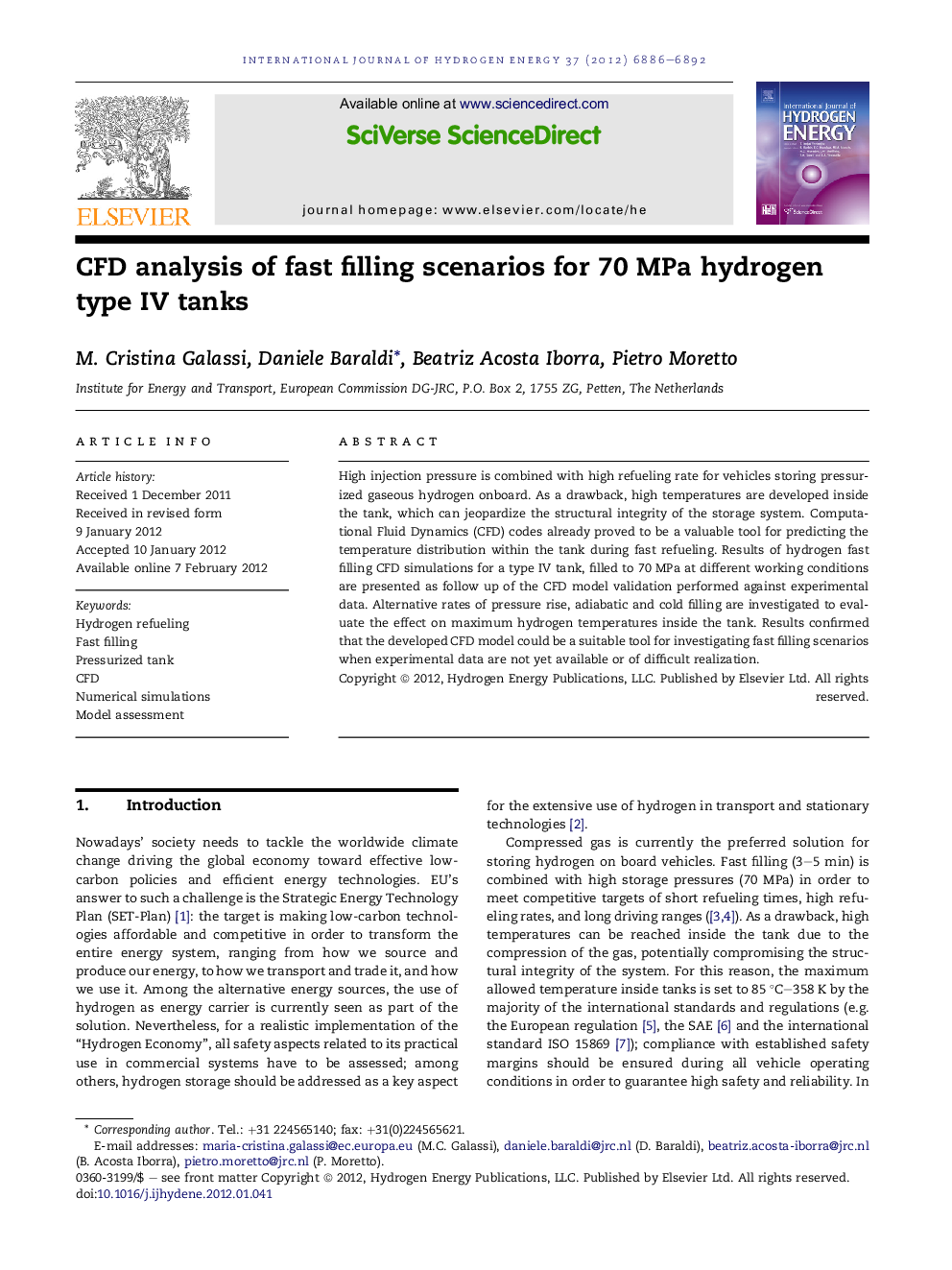| Article ID | Journal | Published Year | Pages | File Type |
|---|---|---|---|---|
| 1276633 | International Journal of Hydrogen Energy | 2012 | 7 Pages |
High injection pressure is combined with high refueling rate for vehicles storing pressurized gaseous hydrogen onboard. As a drawback, high temperatures are developed inside the tank, which can jeopardize the structural integrity of the storage system. Computational Fluid Dynamics (CFD) codes already proved to be a valuable tool for predicting the temperature distribution within the tank during fast refueling. Results of hydrogen fast filling CFD simulations for a type IV tank, filled to 70 MPa at different working conditions are presented as follow up of the CFD model validation performed against experimental data. Alternative rates of pressure rise, adiabatic and cold filling are investigated to evaluate the effect on maximum hydrogen temperatures inside the tank. Results confirmed that the developed CFD model could be a suitable tool for investigating fast filling scenarios when experimental data are not yet available or of difficult realization.
► CFD simulations of hydrogen fast filling for a type IV tank at 70 MPa. ► Predicted temperature rise in good agreement with experimental data. ► The heat transfer to tank walls plays a major role in the physics of the process. ► Alternative rates of pressure rise do not imply lower maximum temperature. ► Hydrogen pre-cooling is a valid solution to reduce high temperatures in the tank.
